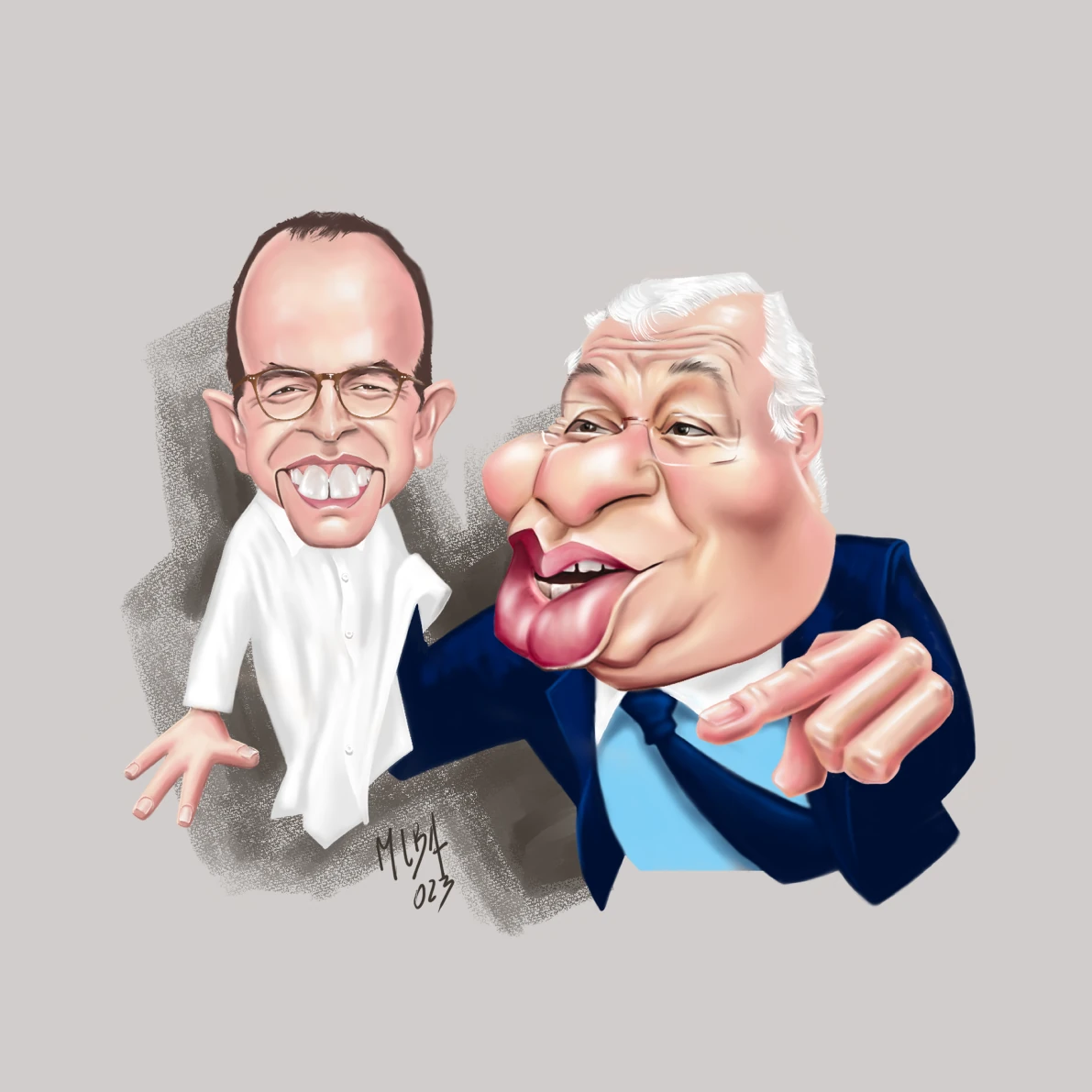
The Prime and His minister
Ventriloquism is an intriguing and often captivating art form that involves the skillful manipulation of one’s voice to create the illusion that a separate, inanimate object is speaking. The ventriloquist, through a combination of vocal techniques, gestures, and storytelling, brings to life a puppet or dummy, engaging audiences in performances that are both entertaining and mystifying.
The origins of ventriloquism can be traced back to ancient civilizations, where it was often associated with religious or mystical practices. In these early forms, ventriloquism was thought to involve the channeling of spirits or supernatural voices through the performer. However, over time, the art evolved into a form of entertainment, with performers using their vocal dexterity to create the illusion of conversations between themselves and their puppets.
Central to ventriloquism is the ability to throw one’s voice, a technique that requires precise control of breath and vocal cords. Ventriloquists learn to manipulate their speech so that the sound appears to come from the puppet, rather than their own lips. This illusion is enhanced by the use of misdirection, where the ventriloquist directs the audience’s attention towards the puppet’s movements and expressions, diverting their focus from the performer’s mouth.
The puppet or dummy used in ventriloquism plays a crucial role in the performance. It becomes a character with distinct traits, personalities, and comedic elements, engaging in playful banter or humorous exchanges with the ventriloquist. The interaction between the ventriloquist and the puppet creates a dynamic that is both amusing and visually captivating, as the puppet seemingly takes on a life of its own.
Ventriloquism is not only about vocal technique but also involves acting, storytelling, and comedic timing. Ventriloquists must possess the skills to make their puppet’s dialogues engaging, relatable, and entertaining. The use of various voices, accents, and tones allows the ventriloquist to differentiate between themselves and the puppet, enhancing the illusion and making the performances more immersive.
Throughout history, ventriloquism has captured the imagination of audiences and been a mainstay in various forms of entertainment. Vaudeville, theater, television, and even contemporary digital media have all featured ventriloquists and their puppet companions. Popular ventriloquists like Edgar Bergen, who introduced the world to the iconic puppet Charlie McCarthy, and more recent artists like Jeff Dunham, with his cast of characters like Walter and Achmed the Dead Terrorist, have brought ventriloquism into the mainstream.
Ventriloquism also highlights the relationship between performer and puppet, often blurring the lines between reality and fiction. Audiences become invested in the puppet’s persona and stories, and the ventriloquist’s skill in manipulating this connection can lead to moments of hilarity, surprise, and genuine emotion.
As an art form, ventriloquism presents both challenges and rewards. Mastering the technique of throwing one’s voice requires dedicated practice and honing one’s vocal abilities. Precision in timing, delivery, and character development is essential for creating a seamless and convincing performance. However, the sense of wonder that ventriloquism evokes in audiences, as they witness the illusion of independent voices emerging from inanimate objects, makes the effort worthwhile.
In conclusion, ventriloquism is a captivating and unique art form that combines vocal manipulation, storytelling, and puppetry to create the illusion of independent voices coming from inanimate objects. Its rich history, spanning from ancient mysticism to modern entertainment, showcases the enduring appeal of this skill. Ventriloquists not only entertain but also challenge our perceptions and engage us in the magic of their performances, highlighting the power of art to evoke wonder and laughter.
